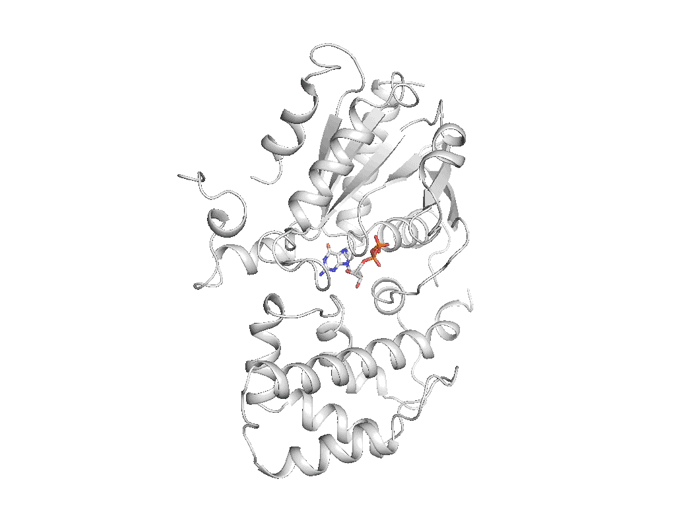Cancer protein could point to new targets for treatment

A new view of a protein frequently mutated in pituitary tumors is overturning conventional wisdom and could point to novel targets for cancer drugs.
The protein, a "G protein" called Gαs, initiates messages inside cells. But a single mutation alters Gαs action in a surprising way. The protein's molecular "off switch" actually switches activity on, researchers report April 5, 2018, in the journal Cell.
That backwards behavior runs counter to what some researchers had expected, and could help scientists devise new cancer drugs that specifically target Gαs, says study coauthor Kevan Shokat, a Howard Hughes Medical Institute investigator at the University of California, San Francisco.
"We uncovered a completely unexpected modality for G protein signaling," he says.
G proteins sit in cell membranes and switch on various cellular messaging networks. But these proteins can be mutated in cancer cells, scrambling cells' messages and biochemical workflow. Anti-cancer drugs that bind to these mutated proteins could restore normal cellular function, Shokat says.
In 2013, he and his colleagues developed a drug for a mutated G protein called K-Ras, which is commonly found in lung and colon cancer cells. This protein had been a target for cancer drug discovery for 30 years, though because that search had largely been unsuccessful, scientists thought the protein was "undruggable."
Like all G proteins, K-Ras turns on various cellular messaging networks once it snags the high-energy molecule GTP. When the protein bites off a portion of GTP's phosphate tail to make the low-energy GDP, it stops switching on cellular messages.
Shokat and his team discovered that the K-Ras mutation they were studying changed the protein so that it bound GTP tightly, forcing the protein to continually activate cellular messages.
The researchers used that knowledge of K-Ras's structure and function to design a drug that blocked GTP binding and prevented the mutant protein from staying active.
In the research published in Cell, Shokat and UCSF colleague Qi Hu studied a mutation in a different G protein, Gαs, the most frequently altered three-component G protein in cancer cells. Mutations that activate Gαs cause pituitary tumors, among others.
Because Gαs and K-Ras are part of the same protein family and have similar mutations, Shokat and his team thought that altering Gαs would have an effect similar to what they observed in K-Ras. "But as we characterized it, we realized it had different features than K-Ras," he says.
While mutant K-Ras was overactive because it held on to GTP, the researchers noticed that the mutant Gαs instead clung to GDP. The team obtained an x-ray crystal structure of the mutated Gαs protein holding GDP and compared it to known structures of active and inactive G proteins. The structure of mutated Gαs/GDP was more similar to a related active G protein than an inactive one. The result was that mutated Gαs remained active as it held GDP, which is when it would normally be turned off.
"This tells us that the protein has multiple ways to be active – by binding GTP or GDP," Shokat says. Since the protein is more flexible when it's bound to GDP, he imagines that mutant Gαs holding GDP may have more pockets where a drug could fit and deactivate the protein in cancer cells.
More information: Qi Hu et al. Disease-Causing Mutations in the G Protein Gαs Subvert the Roles of GDP and GTP, Cell (2018). DOI: 10.1016/j.cell.2018.03.018



















